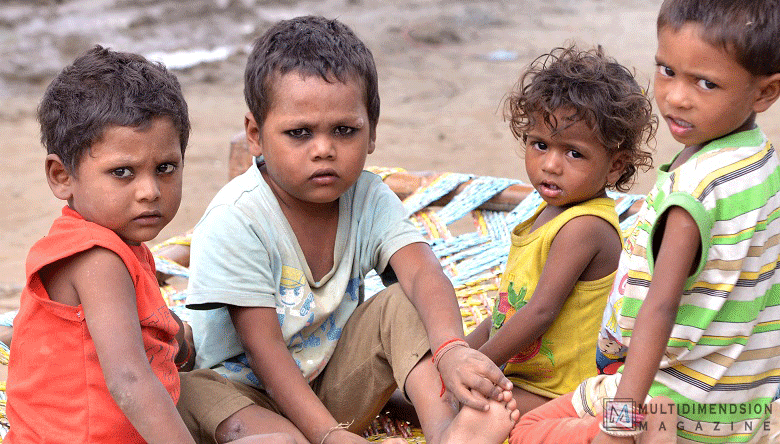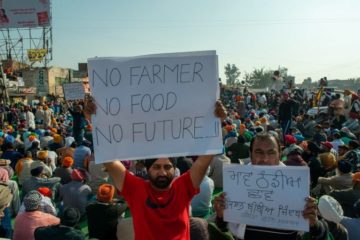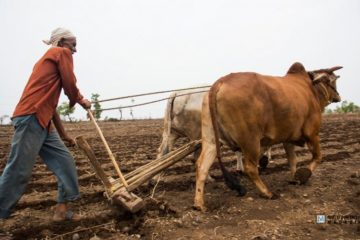Written by : Dr. Trina Biswas
Department of Agricultural Economics & Agribusiness,
Louisiana State University, Baton Rouge, Louisiana, USA,
Photo : Pream Singh
After a steady decline in the number of hungry people in the last two decades, the number of people who go to sleep hungry at night is on the rise again. There were over 200 million fewer hungry people in 2015 (790.7 million) as compared to 1990-92 (991 million) largely due to Sustainable Development Goals adopted by the global community.However, according to the United Nations (FAO), the number of people suffering from chronic hunger increased in 2016. Almost one out of nine people or about 815 million people were suffering from chronic undernourishment in 2016 as per the United Nations. The 2018 Global Report on Food Crises estimated that 124 million people in 51 countries are currently facing Crisis food insecurity or worse (the equivalent of IPC/CH Phase 3 or above) which is a rise in the number from the previous year (108 million in 48 countries faced Crisis food insecurity or worse).
Why is the global hunger on the rise again? Does climate change have to do anything with it? The answer is yes.Climate change worsens the risk of hunger and food availability. Extreme weather conditions along with political instability are identified as the dominant factors driving food insecurity in most of the developing countries. According to the 2018 Global Report on Food Crises, climate disasters triggered food crises in 23 countries in 2017, with over 39 million food-insecure people in need of urgent humanitarian assistance.According to a new Special Alert issued by FAO’s Global Information and Early Warning System (GIEWS), it is likely that reduced harvests resulting from extreme climatic conditions will intensify food insecurity in 2018 and thereby increase the number of people in need of external assistance.
Climate change is triggering extreme weather events such as droughts, floods, and storms.Extreme weather conditions are altering age-old farming traditions, destroying crops and critical infrastructures thereby exacerbating the risk of hunger. Higher temperatures and changes in rainfall pattern have serious implications for food security, nutrition, and health as it affects the quality and quantity of the agricultural output. Lower agricultural output resulting from climate change affects the livelihood of people by lowering the income.Climate change is expected to increase the prices of major crops by lowering agricultural output in most of the developing countries. Moreover, extreme weather events can hinder the delivery of food to the market bydestroying critical infrastructures like roads, railway tracks, harbors, and trigger a dramatic spike in food price.Glacial melt and sea-level rise resulting from climate change are also disrupting livelihoods in the coastal and river delta regions.Adverse climatic conditions also intensifythe threats of deadly diseases like diarrhea, malaria, and malnutritionamong the poorest and the most vulnerable people. These diseases are considered to be the biggest killer of young children especially in the poor countries that are least able to adapt to the climate changes.
According to a study by the International Food Policy Research Institute (IFPRI), while a few agricultural regions are expected to benefit from climate change, overall production will decline due to extreme weather conditions as higher temperatures are expected to reduce total world production of rice, wheat, sorghum, millet, and maize. The same study suggests that extreme climatic condition can lead to an increase in child malnutrition in the developing world by 20% by lowering agricultural output, income, and higher crop-price. The study further reports that the total calories available in 2050 will be lower than in 2000.As suggested by IFPRI research, climate change will put an additional 70 million people at risk of hunger in 2050.
With increasing threats linked to climate change,adoption ofthe climate-resilient food system to mitigate world hunger in the long termshould be part of the sustainability agenda. Actions to reduce the emission of harmful greenhouse gases to fight climate changecan reduce the risk of hunger. Investments in climate-smart agriculturethat canincrease agricultural productivity and reduce the emission of greenhouse gases should be part of policy goals tobetter handle and adapt challenges of a changing climate.Embracing technological innovations in agricultural production can boost yield and makethe system more equitable and resilient to climate change. Liberalization of world food trade could also substantially reduce the number of people at the risk of hunger.




